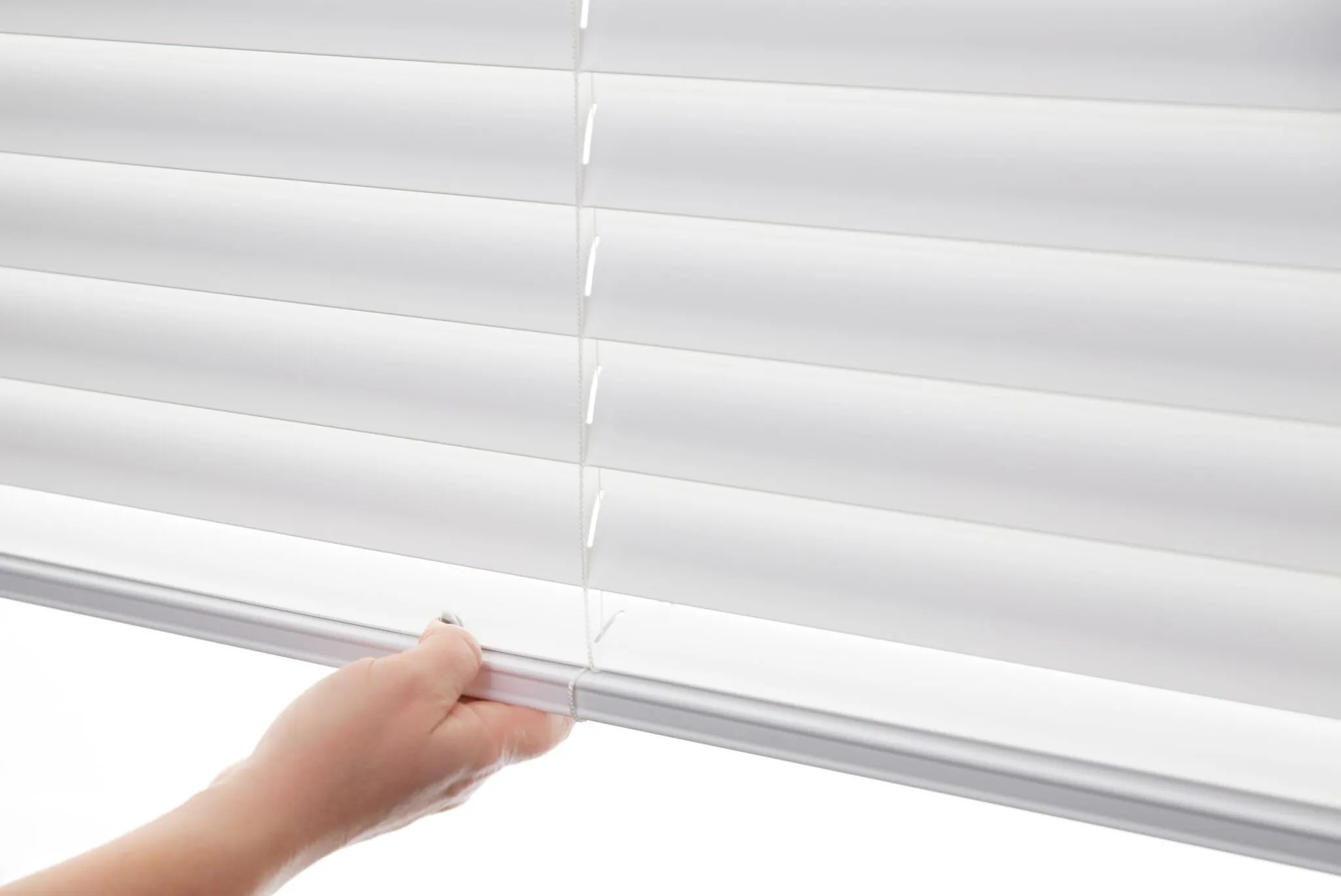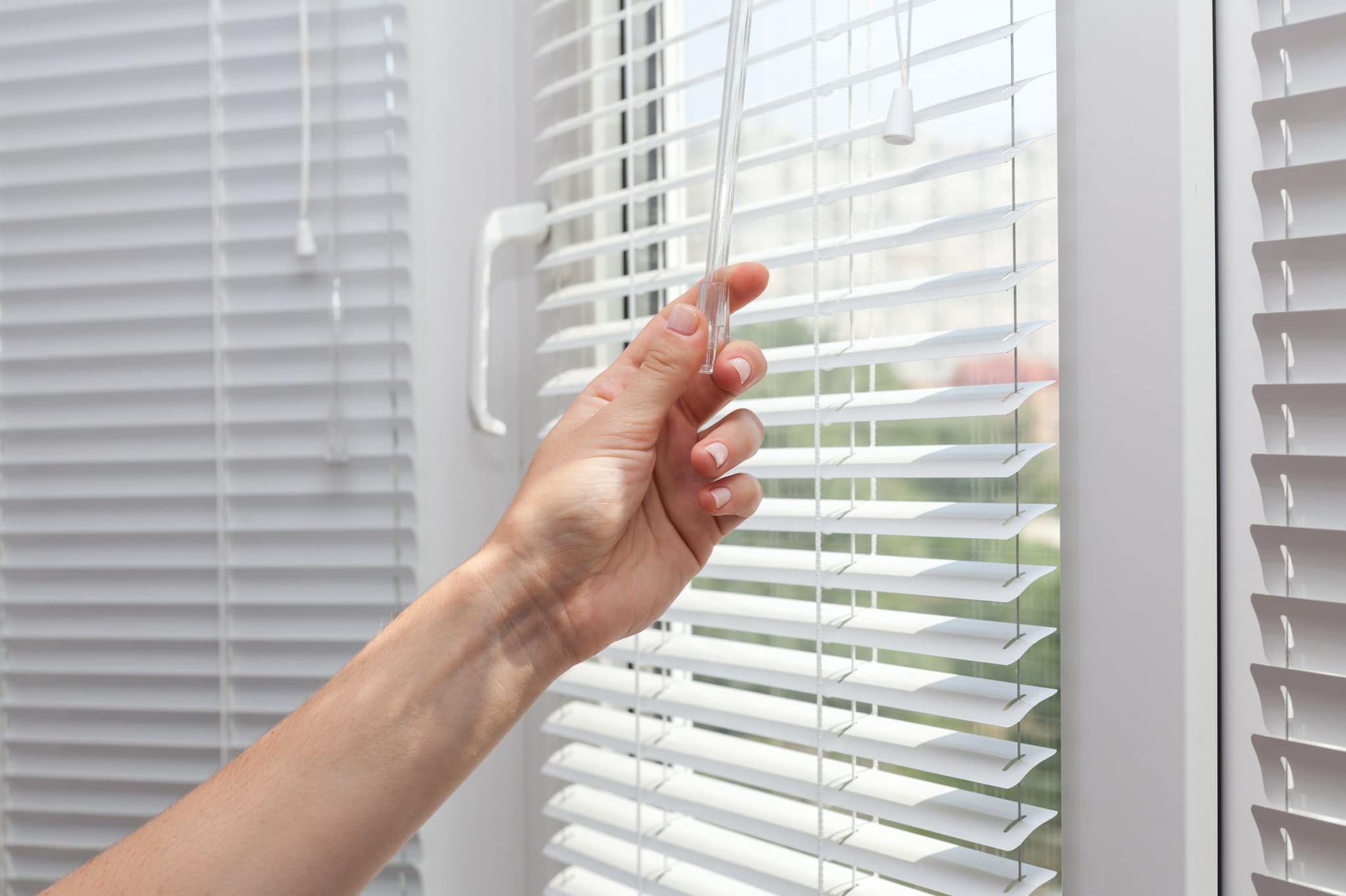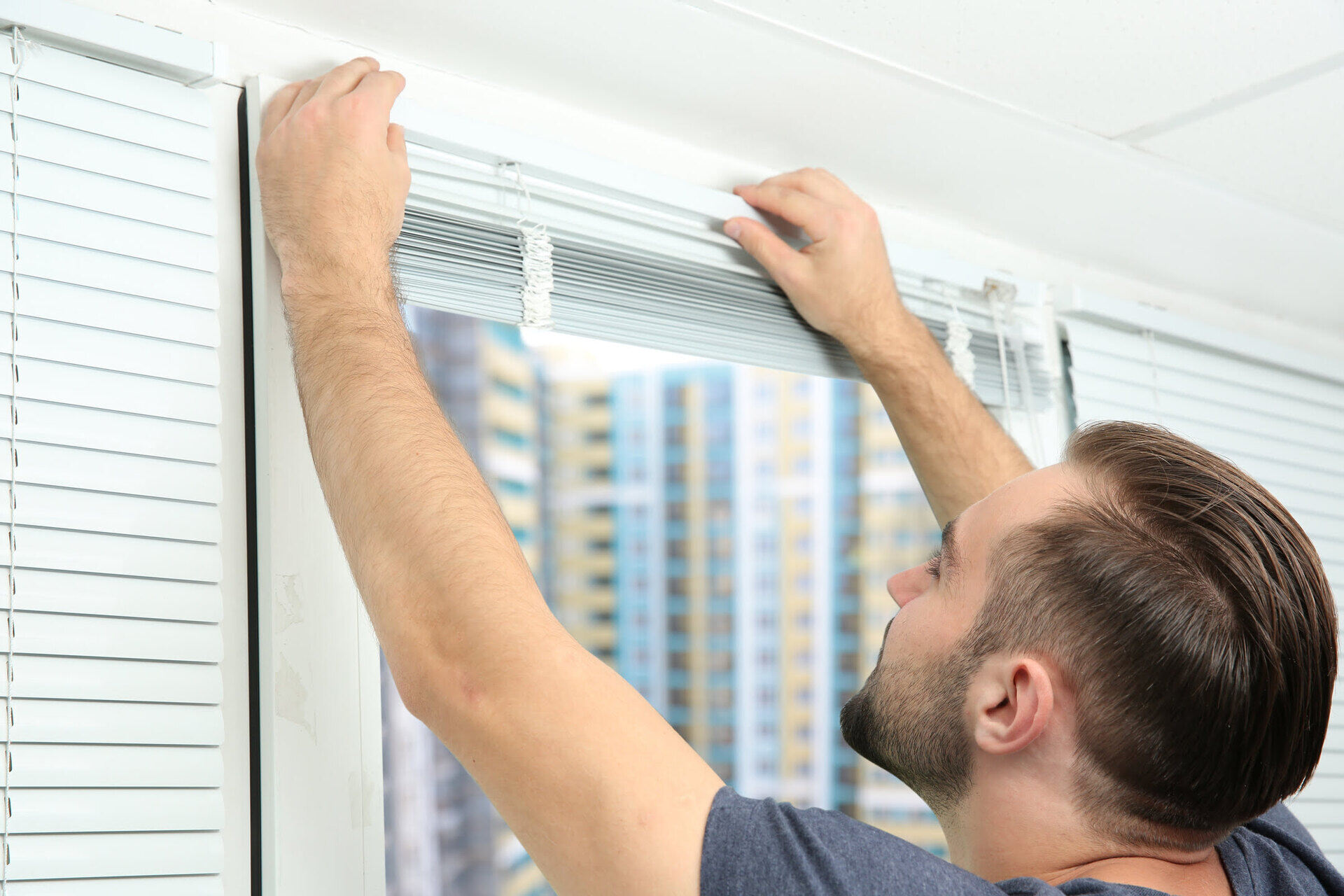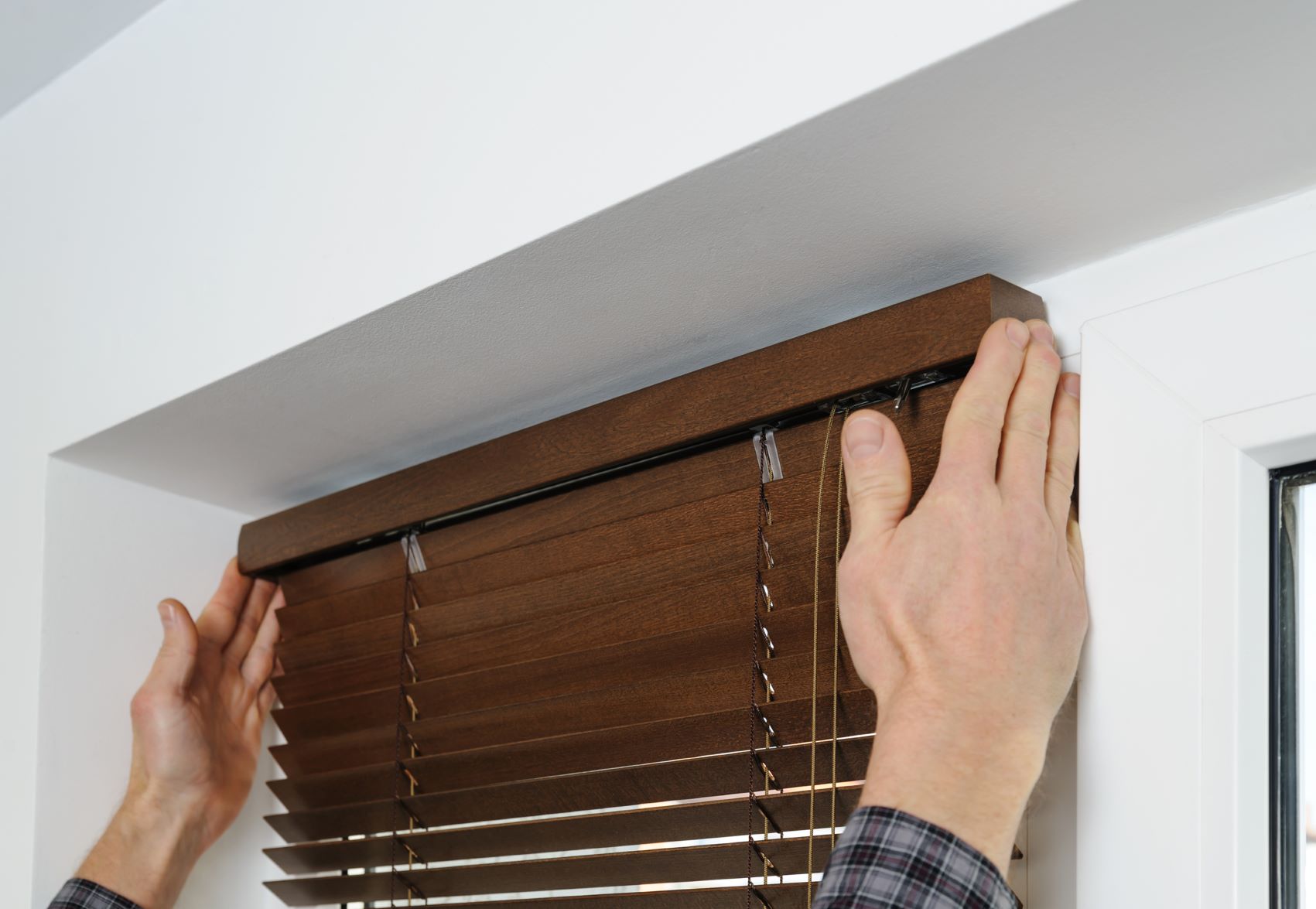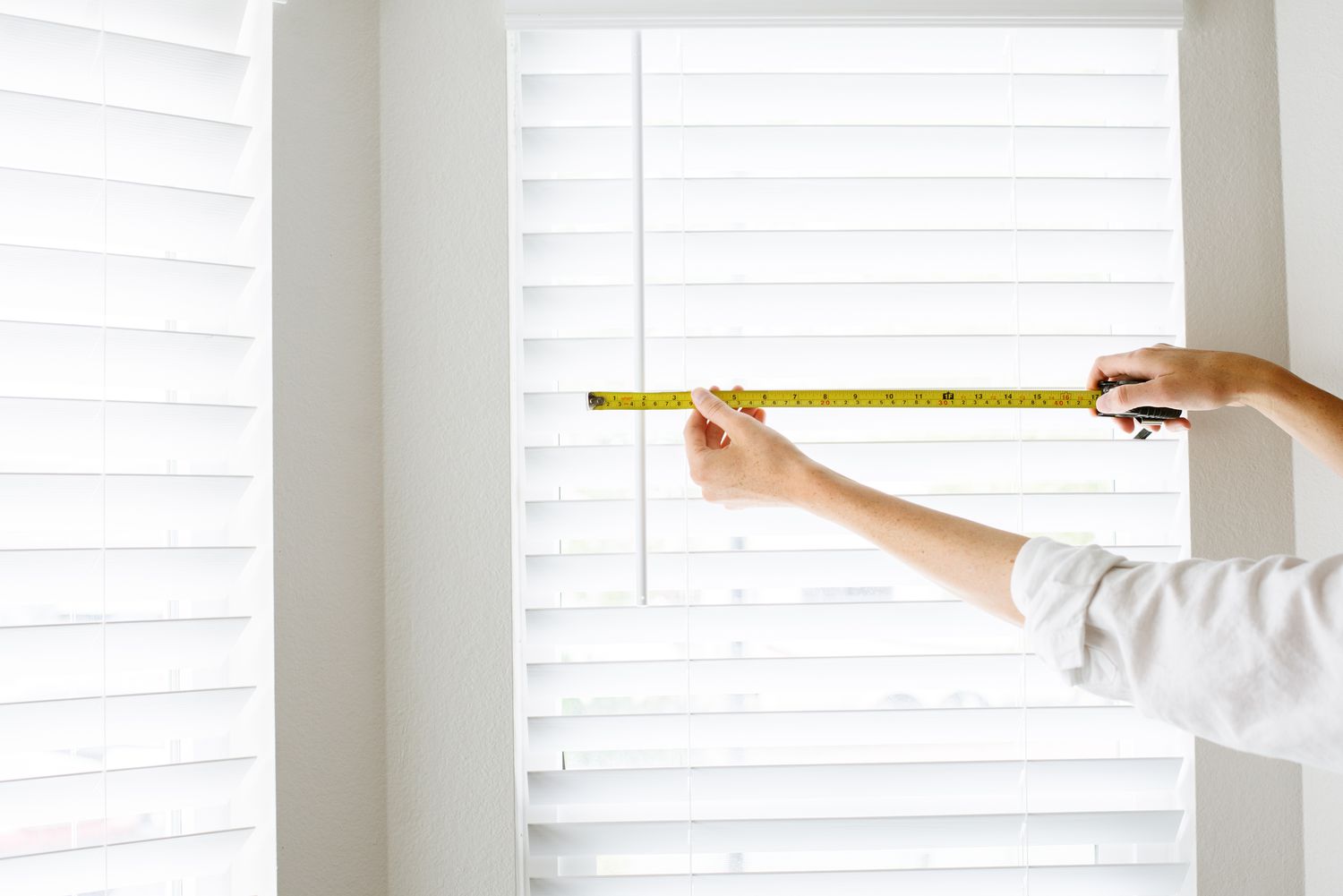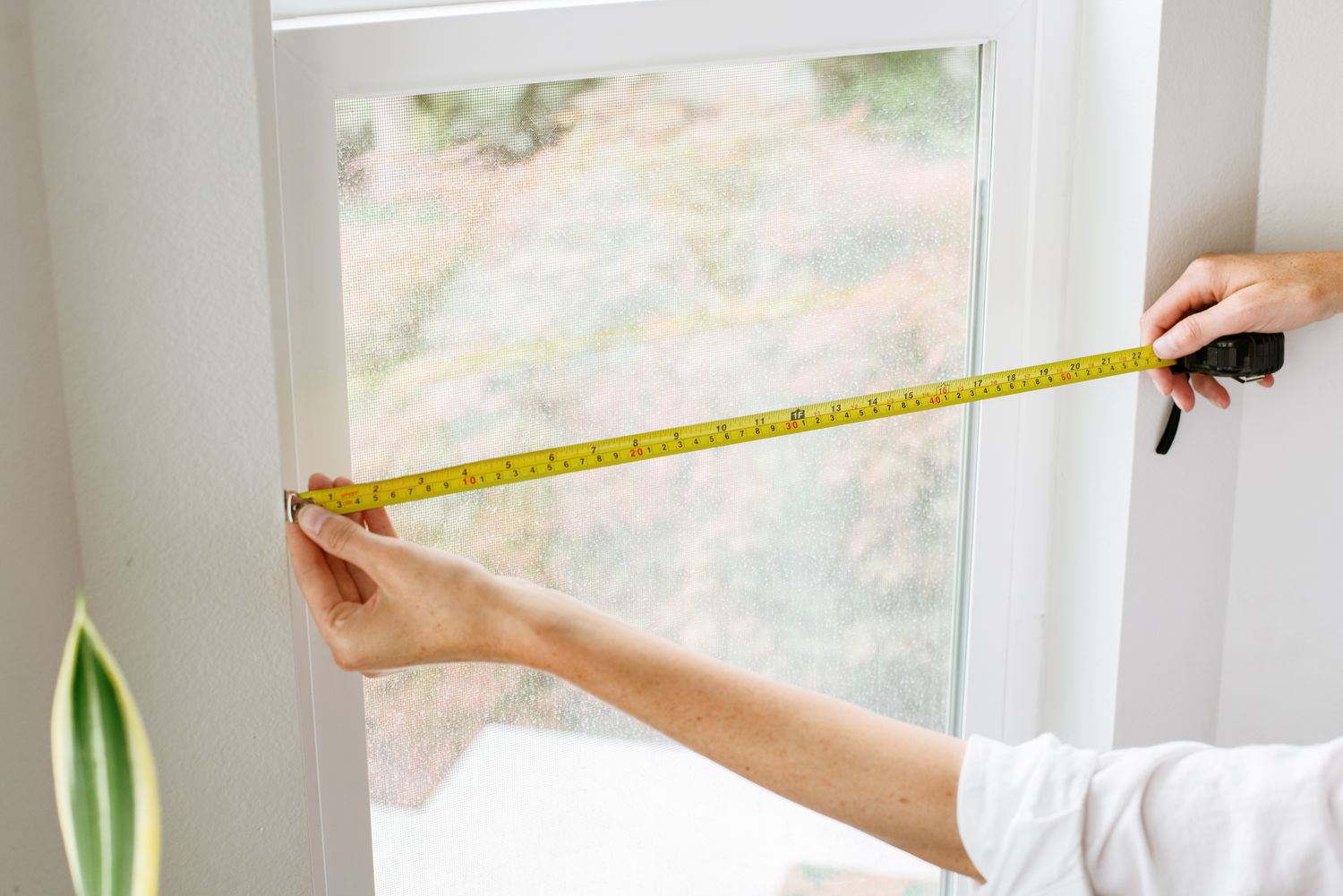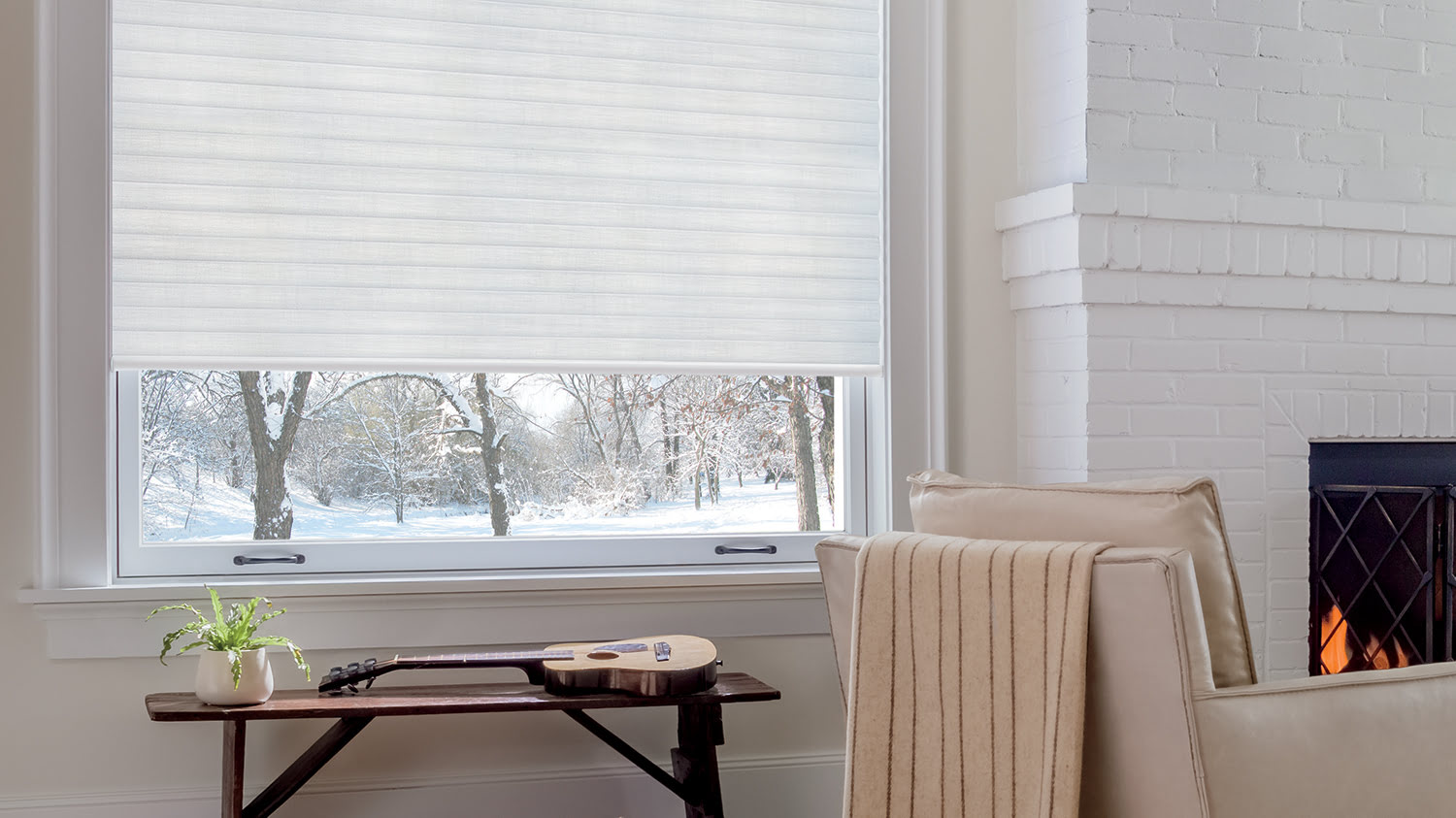

Articles
How To Lower Window Blinds
Modified: January 9, 2024
Learn effective strategies for lowering window blinds with our informative articles. Discover tips and tricks to achieve the perfect ambiance in any room.
(Many of the links in this article redirect to a specific reviewed product. Your purchase of these products through affiliate links helps to generate commission for Storables.com, at no extra cost. Learn more)
Introduction
Window blinds are an essential element in any home or office, providing privacy, controlling sunlight, and adding aesthetic appeal to your space. Lowering window blinds not only enhances the ambiance but also offers protection against harsh glares and harmful UV rays. Whether you’re looking to create a cozy atmosphere or simply want to block out the unwanted view, knowing how to lower window blinds effectively is crucial.
In this article, we will guide you through the process of lowering window blinds and offer valuable insights to ensure a smooth experience. From selecting the right blinds to proper installation, we will cover all the necessary steps to help you achieve the desired results.
So, let’s dive in and discover how to lower window blinds like a pro!
Key Takeaways:
- Choose the right blinds by considering aesthetics, light control, and maintenance. Accurate measurement and proper installation are crucial for a perfect fit and smooth operation.
- Lowering window blinds is a simple process, but proper maintenance is essential for longevity. Regular dusting, spot cleaning, and avoiding excessive moisture will keep your blinds looking fresh and functional.
Read more: How To Lower Window Blinds Without A Cord
Choosing the Right Blinds
When it comes to selecting window blinds, there are several factors to consider. The type of blinds you choose should align with your preferences, budget, and the functionality you are seeking. Here are some popular options to help you make an informed decision:
- Venetian Blinds: These blinds feature horizontal slats that can be tilted to control the amount of light and privacy. They are available in various materials such as wood, aluminum, or PVC, allowing you to choose the one that matches your interior decor.
- Roman Shades: These fabric blinds offer an elegant and sophisticated look. They are made from soft fabrics that fold up when the blinds are raised and unfold to cover the window when lowered. Roman shades are excellent for diffusing light while providing privacy.
- Roller Blinds: These blinds are simple and versatile. They consist of a single piece of fabric that rolls up and down, allowing you to easily adjust the light and privacy levels. Roller blinds come in a variety of colors, patterns, and opacity levels.
- Cellular Shades: Also known as honeycomb shades, these blinds are energy-efficient and provide excellent insulation. They consist of cells that trap air, keeping your space cool in the summer and warm in the winter. Cellular shades are available in various light-filtering and blackout options.
- Vertical Blinds: Vertical blinds are an excellent choice for large windows or sliding glass doors. They feature vertical slats that can be easily rotated to control light and privacy. Vertical blinds are available in various materials like fabric, vinyl, or aluminum.
Consider the aesthetics of your space, the amount of control you need over light and privacy, and your budget when choosing the right blinds for your windows. It’s also a good idea to take into account the maintenance requirements of each type of blind, as some may require more upkeep than others.
Proper Measurement
Accurate measurement is crucial in ensuring that your blinds fit perfectly and function properly. Here’s a step-by-step guide to help you measure your windows correctly:
- Width Measurement: Start by measuring the width of the window frame from the inside edge of one side to the inside edge of the other side. Take three measurements – at the top, middle, and bottom of the window – and note down the smallest measurement. This ensures that the blinds won’t be too wide for the window.
- Height Measurement: Measure the height of the window frame from the top edge to the bottom edge. Again, take three measurements – on the left, center, and right sides of the window – and record the longest measurement. This ensures that the blinds will fully cover the window without leaving any gaps.
- Mounting Depth: Measure the depth of the window frame to determine the available space for mounting the blinds. This measurement will help you select the appropriate mounting brackets and ensure that the blinds fit correctly without any obstructions.
- Outside Mount: If you prefer an outside mount, where the blinds are mounted on the wall or window frame, measure the desired width and height of the blinds. Add a few inches to the width and height measurements to ensure proper coverage and overlap.
It’s important to double-check your measurements before purchasing blinds to ensure a precise fit. Remember to measure each window individually, as they may vary slightly in size. If you’re unsure about the measurements or installation process, consult a professional or refer to the manufacturer’s guidelines.
Mounting the Blinds
Once you have chosen the perfect blinds and taken accurate measurements, it’s time to mount them on your windows. Follow these steps for a successful installation:
- Gather the Necessary Tools: Before you begin, make sure you have all the required tools, including a tape measure, drill, screws, screwdriver, and a level. Having these tools handy will make the installation process much smoother.
- Preparation: Read the manufacturer’s instructions carefully and familiarize yourself with the blinds and mounting brackets. Ensure that the brackets are compatible with your blinds and that you have enough brackets for proper support.
- Mark the Mounting Points: Use a pencil and a level to mark the position of the mounting brackets on the window frame or wall. Make sure the marks are level and evenly spaced.
- Drill Pilot Holes: Using a drill bit slightly smaller than the diameter of the screws, drill pilot holes at the marked positions. This will prevent the wood from splitting when you insert the screws.
- Attach the Brackets: Place the brackets on the pilot holes and secure them in place using screws and a screwdriver. Ensure that the brackets are level and tightly secured for optimum stability.
- Test the Fit: Once the brackets are in place, carefully place the blinds into the brackets and ensure they fit properly. Test the movement of the blinds to ensure they raise and lower smoothly without any obstructions.
- Adjustments: If the blinds are not fitting correctly or are uneven, make adjustments to the brackets as needed. This may involve loosening the screws and repositioning the brackets to achieve the desired fit.
- Secure the Blinds: Once the blinds are properly aligned and fit perfectly, secure them in place by tightening the screws on the brackets. Make sure the blinds are stable and securely mounted.
It’s important to follow the manufacturer’s instructions and guidelines specific to your blinds during the mounting process. If you’re uncertain or uncomfortable with the installation, it is advisable to seek professional help.
When lowering window blinds, always make sure to hold onto the cord or wand to control the descent and prevent the blinds from slamming down too quickly. This will help to protect the blinds and ensure they last longer.
Lowering the Blinds
Lowering your window blinds is a straightforward process once they are properly installed. Here are the steps to follow:
- Locate the Control Cord/Chain: Most blinds have a control cord or chain that is used to raise and lower them. Look for this cord or chain on the side or bottom of the blinds.
- Hold the Cord/Chain Firmly: Grasp the control cord or chain firmly with your hand. Make sure you have a good grip to prevent slipping or losing control of the blinds.
- Pull Down Slowly: Gently pull the cord or chain downwards, allowing the blinds to lower. Start with a slow and controlled motion to ensure smooth operation.
- Release the Cord/Chain: Once the blinds have reached your desired height, release the cord or chain. The blinds should remain in place without any further adjustments required.
- Adjust the Tilt (if applicable): If your blinds have horizontal slats that tilt, you can adjust the angle of the slats for better light control. Look for a separate control cord or wand that allows you to tilt the slats. Gently move the cord or wand to tilt the slats to your desired angle.
- Lock the Blinds (if applicable): Some blinds have a locking mechanism that allows you to securely lock them in place once lowered. Look for a locking mechanism at the bottom of the blinds and engage it if necessary.
It’s important to handle the control cord or chain with care and avoid pulling too forcefully or abruptly, as this may damage the blinds. With a gentle and controlled approach, you can easily lower your blinds to your desired height and angle for optimal light and privacy control.
Remember, different types of blinds may have slight variations in the lowering process, so always refer to the manufacturer’s instructions for specific guidance.
Read more: How To Lower Levolor Window Blinds
Maintenance and Cleaning
Maintaining and cleaning your window blinds regularly is essential to keep them in optimal condition and prolong their lifespan. Here are some tips to help you with the maintenance and cleaning process:
- Dust Regularly: Use a soft cloth, feather duster, or a microfiber duster to remove dust from the blinds. Start from the top and work your way down, gently wiping each slat or panel. Alternatively, you can use a vacuum cleaner with a brush attachment to clean the blinds.
- Spot Cleaning: If you notice any stains or spots on your blinds, use a damp cloth or sponge with mild detergent or gentle cleaner to spot clean the affected areas. Avoid using harsh chemicals that can damage the blinds. Test the cleaner on a small, inconspicuous area first to ensure it doesn’t cause any discoloration.
- Baking Soda Solution: For stubborn stains, you can create a paste by mixing baking soda with water. Apply the paste to the stain, let it sit for a few minutes, then gently scrub it off with a soft brush or sponge. Rinse with clean water and wipe dry.
- Ultrasonic Cleaning: If you have blinds made of aluminum or vinyl, you can consider professional ultrasonic cleaning. This method uses sound waves to remove dirt and grime from the blinds without causing any damage. Contact a professional cleaning service that offers this service.
- Avoid Excessive Moisture: Some blinds, like wooden blinds, should not be exposed to excess moisture. Avoid cleaning them with excessive water or steam, as this can cause warping or damage. Instead, use a dry or slightly damp cloth to clean wooden blinds.
- Lubricate Moving Parts: If your blinds have moving parts, such as tilt mechanisms or pulleys, it’s a good idea to lubricate them occasionally to ensure smooth operation. Use a silicone-based or dry lubricant recommended by the manufacturer.
- Inspect for Damage: Regularly inspect your blinds for any signs of damage or wear and tear. Look for broken slats, frayed cords, or malfunctioning mechanisms. Address any issues promptly to prevent further damage and ensure the blinds function properly.
By following these maintenance and cleaning tips, you can keep your window blinds looking clean, fresh, and in excellent condition for years to come.
Conclusion
Lowering window blinds is a simple yet essential task that allows you to control light, privacy, and the overall ambiance of your space. By following the steps outlined in this article, you can choose the right blinds, measure accurately, mount them correctly, and lower them with ease. Additionally, proper maintenance and cleaning will ensure your blinds remain in excellent condition and provide long-lasting functionality.
Remember to select blinds that align with your preferences and meet your specific needs. Consider factors like material, style, and functionality when making your choice. Accurate measurements are vital to ensure a perfect fit, so take the time to measure your windows carefully. Proper installation and mounting will ensure stability and smooth operation of your blinds.
Once your blinds are installed, lowering them is a simple task. Use the control cord or chain to lower the blinds to your desired height, and adjust the slats if applicable. Take care not to pull too forcefully and follow the manufacturer’s instructions for any additional features, such as locking mechanisms.
Maintaining and cleaning your blinds on a regular basis will keep them looking their best. Dusting frequently and spot cleaning as needed will prevent the buildup of dirt and stains. Be mindful of the specific cleaning instructions for your blinds’ material, and avoid excessive moisture or harsh chemicals.
By following these guidelines, you can enjoy the benefits of lowered window blinds to enhance privacy, control light levels, and create a comfortable atmosphere in your home or office. So go ahead and confidently lower your blinds, transforming your space into a haven of tranquility and elegance.
Frequently Asked Questions about How To Lower Window Blinds
Was this page helpful?
At Storables.com, we guarantee accurate and reliable information. Our content, validated by Expert Board Contributors, is crafted following stringent Editorial Policies. We're committed to providing you with well-researched, expert-backed insights for all your informational needs.
